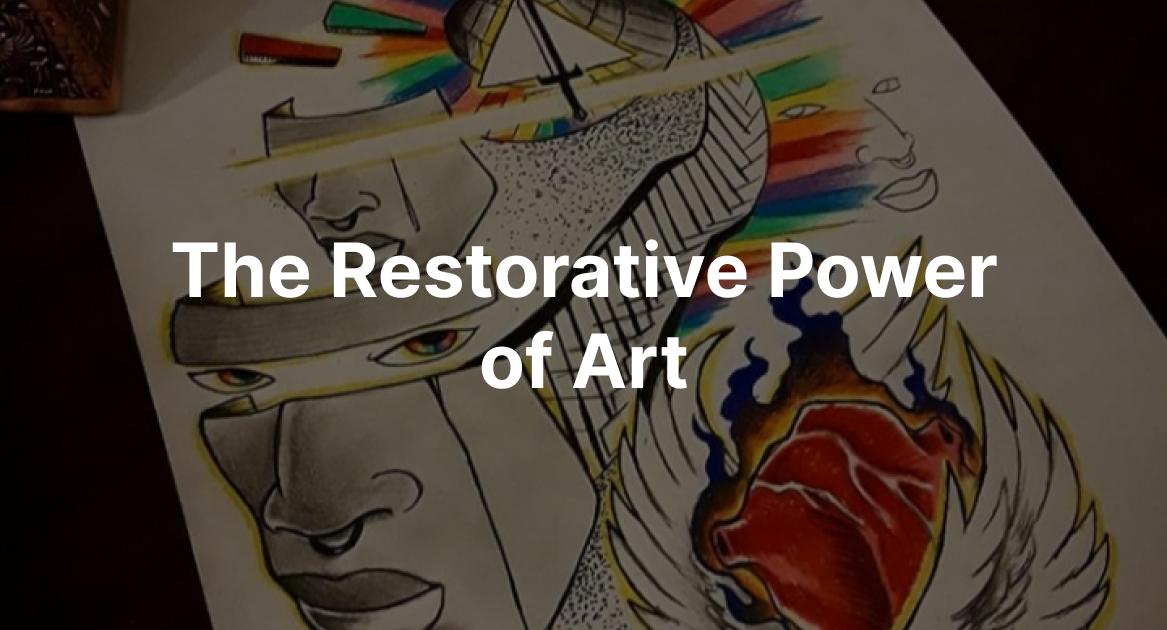The pandemic was the time when the majority of us actually realized how mental health and stress were affecting our bodies, our health, and our daily lives. Also, the pandemic had a pronounced effect on individuals’ mental health.
This was the time when people started looking towards art to reduce their stress and free up their tension-filled minds. During the pandemic, we all tried all sorts of art. Since then, art has become a part of our daily lives.
And this isn’t an exaggeration.
Art Can Heal.
People haven’t appreciated the restorative power of art. After the pandemic, people realized the therapeutic power of art.
Whether you splash an oil canvas or doodle on a page mindlessly, the research has proven that the simplest activity of creating art holds powerful restorative properties.
According to a study published in Art Therapy Journal, three-quarters of participants experienced a low level of stress hormone- cortisol in the 45 minutes art-making session.
According to Mallory Montogomery, an art therapist:
“Through art, even people who don’t view themselves as creative, end up reconnecting to a childlike sense of play and enjoyment they had when they got their first box of crayons.”
Art has the power to heal, to restore, and to uplift. It has been used for centuries to express human emotion and to communicate messages that cannot be expressed in words.
The act of creating art can be a transformative experience, as it allows individuals to tap into their creative potential and express themselves in ways that can be both cathartic and healing.
In this article, we will explore the restorative power of art and how it can be used to promote healing and well-being.
Art as Therapy
Art therapy is a form of psychotherapy that uses art as a means of communication and self-expression. It is a non-verbal form of therapy that can be particularly useful for individuals who struggle with traditional forms of talk therapy. Art therapy can be used to treat a wide range of mental health conditions, including anxiety, depression, and post-traumatic stress disorder (PTSD).
The act of creating art can be a deeply meditative experience, allowing individuals to focus their attention and calm their minds. It can also help individuals to connect with their emotions in a non-judgmental way, allowing them to process difficult feelings and experiences in a safe and supportive environment. In art therapy, the therapist acts as a guide, helping the individual to explore their emotions and to use art as a means of self-expression.
Art as a Tool for Mindfulness
Mindfulness is the practice of being present in the moment and observing one’s thoughts and feelings without judgment. Art can be a powerful tool for cultivating mindfulness, as it requires individuals to focus their attention on the task at hand and to be fully present in the moment.
When creating art, individuals must pay attention to the colors, textures, and shapes they are working with, as well as the physical sensations of the art-making process. This can help to bring individuals into a state of mindfulness, allowing them to let go of distracting thoughts and to connect with the present moment.
Art as Self-Expression
Art can be a powerful means of self-expression, allowing individuals to communicate their thoughts, feelings, and experiences in a way that words cannot. Whether through painting, drawing, sculpture, or other forms of art, individuals can express themselves in a way that is uniquely their own.
The act of self-expression can be particularly beneficial for individuals who struggle with emotional expression, as it can help them to communicate their emotions in a non-threatening way. It can also be empowering, allowing individuals to take ownership of their emotions and experiences and to feel a sense of agency over their lives.
Art as Community Building
Art can be a powerful means of building community and fostering social connection. When individuals come together to create art, they are engaging in a shared experience that can foster a sense of belonging and connection.
Art can also be used to promote social change and to raise awareness about important issues. When individuals come together to create art that addresses social issues such as poverty, racism, or environmental degradation, they are engaging in a form of activism that can bring about meaningful change.
For example, the “Inside Out Project” is a global art project that uses large-scale portraits to promote social justice and to give voice to marginalized communities.
a study published in the Journal of Health Psychology found that viewing art in a hospital setting was effective in reducing stress and anxiety in patients undergoing chemotherapy.
Conclusion
These are just a few examples of how art can be used to promote healing and well-being. As we continue to navigate the challenges of the modern world, art can provide us with a means of self-expression, connection, and social change.
These are just a few examples of how art can be used to promote healing and well-being. As we continue to navigate the challenges of the modern world, art can provide us with a means of self-expression, connection, and social change.
Art has the power to heal and restore. Whether through art therapy, mindfulness practices, self-expression, or community building, art can be a transformative experience that promotes healing and well-being. As we continue to navigate the challenges of the modern world, art can provide us with a means of self-expression, connection, and social change.
ArtbyO is one such platform where you can connect with the ART and the various forms of ART.
The artworks by Obray Cowan are surely a way to attain mindfulness and get relief from the daily chaos of the world.
Buy the “Colouring with ArtbyO” book and experience the restorative power of art.

